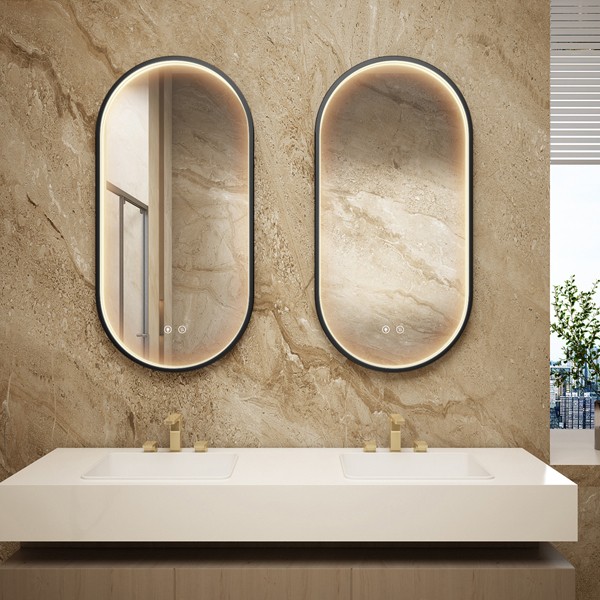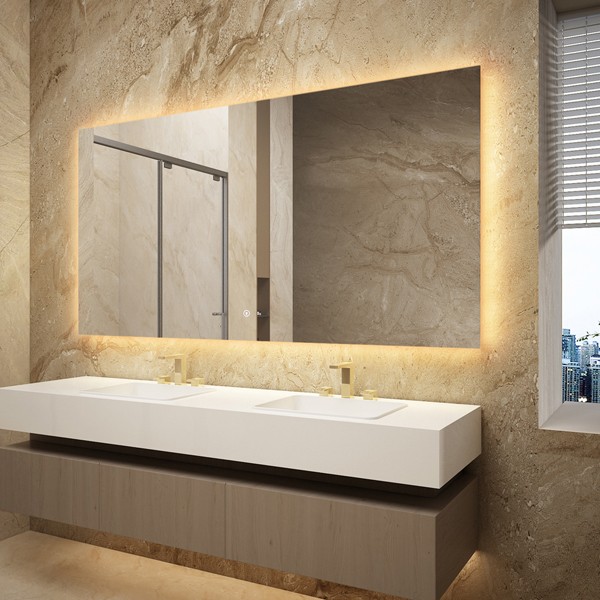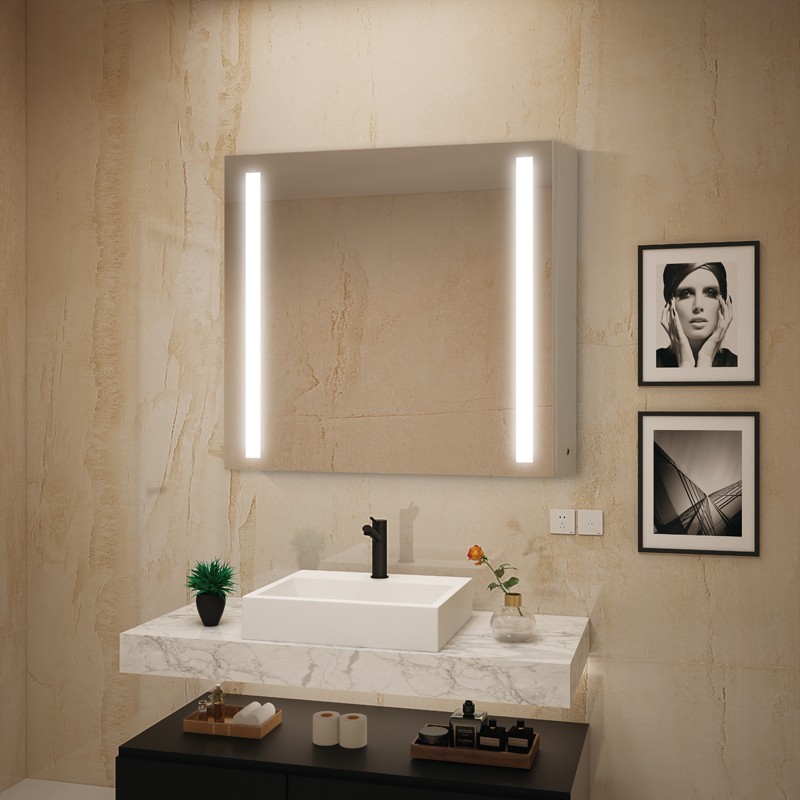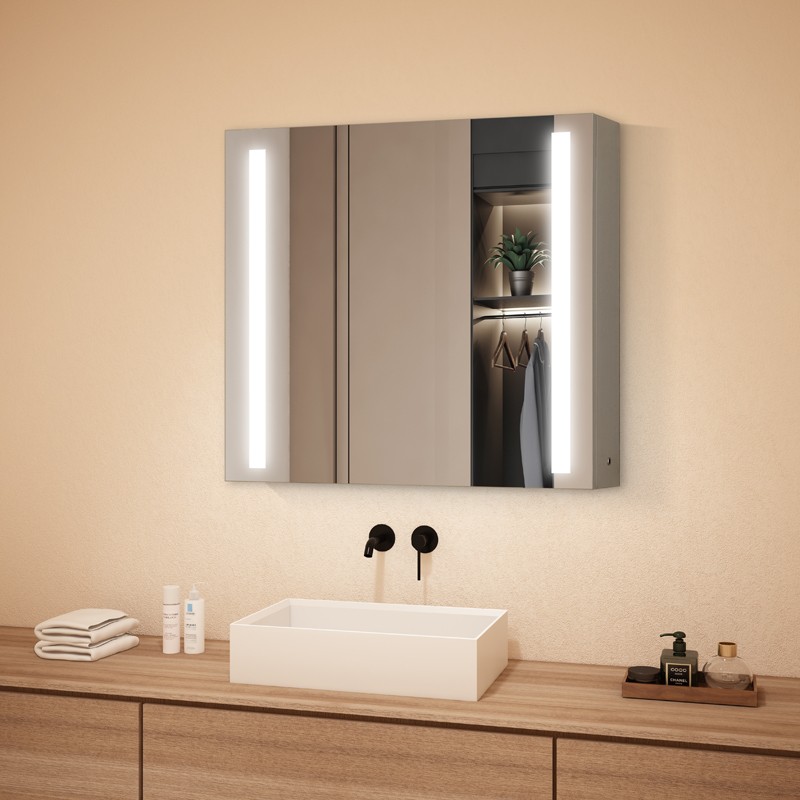Discover a variety of glass products in the industry that meet your aesthetic and functional needs. Consider the popularity of low-iron glass for applications that demand superior clarity and minimal color distortion. The right glass choice is essential for the success of mirror and glass projects.
Opting for low-iron glass instead of standard clear glass can greatly improve the clarity of your reflection. With reduced iron content, this glass minimizes the greenish tint that often appears in regular clear glass. This feature is perfect for situations where accurate color representation and transparency are essential.
Curious about the contrast between low-iron glass and clear glass? Read on as we break down the differences for you.

Key Takeaways
-
Upgrade your mirror game with our low-iron glass, providing crystal-clear reflections and true color accuracy compared to standard clear glass.
-
Easily improve the visual and practical aspects of your glass and mirror projects by selecting the right glass type.
As you decide between low-iron and clear glass, it's crucial to grasp the key distinctions in order to make an informed choice.

What Is Clear Glass
Discover the versatility of standard clear glass, a common material used in everyday objects such as windows and beverage bottles. This classic glass is typically composed of silica (sand), soda ash, and lime.
Iron oxide, also known as ferric oxide, is a key element found in standard clear glass. It is naturally occurring in the materials used to create glass, and as the iron content increases, a green tint may become more noticeable, particularly in thicker slabs or larger pieces.
The transparency of clear glass is typically top-notch, ensuring substantial light transmission. However, the presence of iron content creates a faint green hue, which may affect the overall brightness and clarity, especially when evaluating its ability to maintain neutral colors and transmit visible light. This effect becomes more significant as the thickness of the glass increases, slightly tainting the view of natural light passing through.
When aesthetics are essential in applications like windows, curtain walls, and facades, the green tint of traditional clear glass can have a subtle impact on the appearance and atmosphere of the space. In such cases where color neutrality is crucial, Copper Free Mirror may be the better option.
Although it may not be immediately apparent in thinner panes, the presence of this color tint can be easily observed by looking at the glass from the side or when multiple layers are used. Despite its light green hue, clear glass is still a popular and flexible choice for a variety of purposes, thanks to its affordability, accessibility, and overall performance.

What Is Low-Iron Glass
Due to its reduced iron oxide content, low-iron glass is often referred to as extra-clear glass or optically clear glass. Lower iron content significantly enhances transparency and allows more light to pass through, resulting in superior clarity and brightness compared to standard clear glass.
Benefits:
Increased light transmission
Neutral color rendition
Enhanced visual clarity
In applications requiring exceptional clarity, this glass variety is highly valued. Displays using low-iron glass have shown that it is more effective at allowing light to pass through than traditional clear glass. The aesthetic and practical benefits of low-iron glass can be seen in architectural features such as frameless glass walls, storefronts, and display cases. Museums and art galleries often use this material to ensure that visitors see exhibits in their true colors.
Low-iron glass promotes brightness and energy efficiency by allowing more natural light to enter spaces. Using it in solar panels demonstrates its effectiveness, as the glass's light transparency maximizes solar energy absorption. Therefore, the material's attributes are not only visually appealing, but also economically and environmentally beneficial.

Low Iron Glass Applications
-
When considering solar panels, low iron glass is a great choice. It offers a higher light transmission of 5 to 10% compared to clear glass, allowing for more efficient absorption of solar energy. Say goodbye to energy loss through traditional clear glass with this ideal solution.
-
Frameless glass walls are frequently used in both commercial and residential spaces, with a particular emphasis on low iron glass applications. These walls boast a superior level of transparency and aesthetic appeal compared to traditional clear glass. Not only do they provide an unobstructed view, but they also create a sense of openness and allow natural light to flow freely.
-
For back-painting projects, it is crucial to begin with a glass that provides accurate color. Low iron glass is the perfect foundation, guaranteeing vibrant and authentic painted tones. Its uses vary from vibrant glass walls to decorative furniture panels.
-
Retailers often choose low iron glass for display cases and shelves in their retail spaces. This type of glass minimizes color distortion, allowing merchandise to be showcased in its true shade. The clarity of low iron glass is relied upon by retailers to encourage impulse buys, which, according to Invesp, make up a significant portion of store revenue.
-
Markerboards - Opt for low iron glass as the material of choice for a pristine, ultra-clear surface that guarantees excellent legibility. This is a significant upgrade from standard whiteboards, combining practicality and refined design.
Discover the many uses of low iron glass - from greenhouses to shower enclosures and beyond! With its clear quality and strength, it's a top choice for architectural projects and is revolutionizing the solar and display industries. From light transmission to visual clarity, this glass is a key player in creating innovative and high-quality solutions for a variety of domains.

Factors to Consider When Choosing Glass for Your Mirror
When choosing glass for a project, it's important to factor in the budget, the role of color neutrality in the design, and the glass's impact on the overall project.
For industries or premium architectural designs that demand precise color rendering, low-iron glass is the preferred choice due to its ability to provide maximum clarity and true-to-life color representation. Although it may have a higher cost, the strength and durability of this glass make it a worthwhile investment. In addition, it can also undergo the tempering process.
Frequently Asked Questions
Are there any drawbacks to using low iron glass for shower doors?
Although shower doors may look clear and sleek with low iron glass, it may be prone to scratches and come at a higher cost compared to standard clear glass.
Discovering the difference between low iron glass and clear glass: what methods are used?
When looking at the edge of the glass, you can easily distinguish low iron glass from clear glass by its clearer and almost colorless appearance, unlike the green edge of regular glass. Another noticeable indicator is its higher transparency once it is installed.
 Shanghai Divas Glass Co.,Ltd
Shanghai Divas Glass Co.,Ltd
